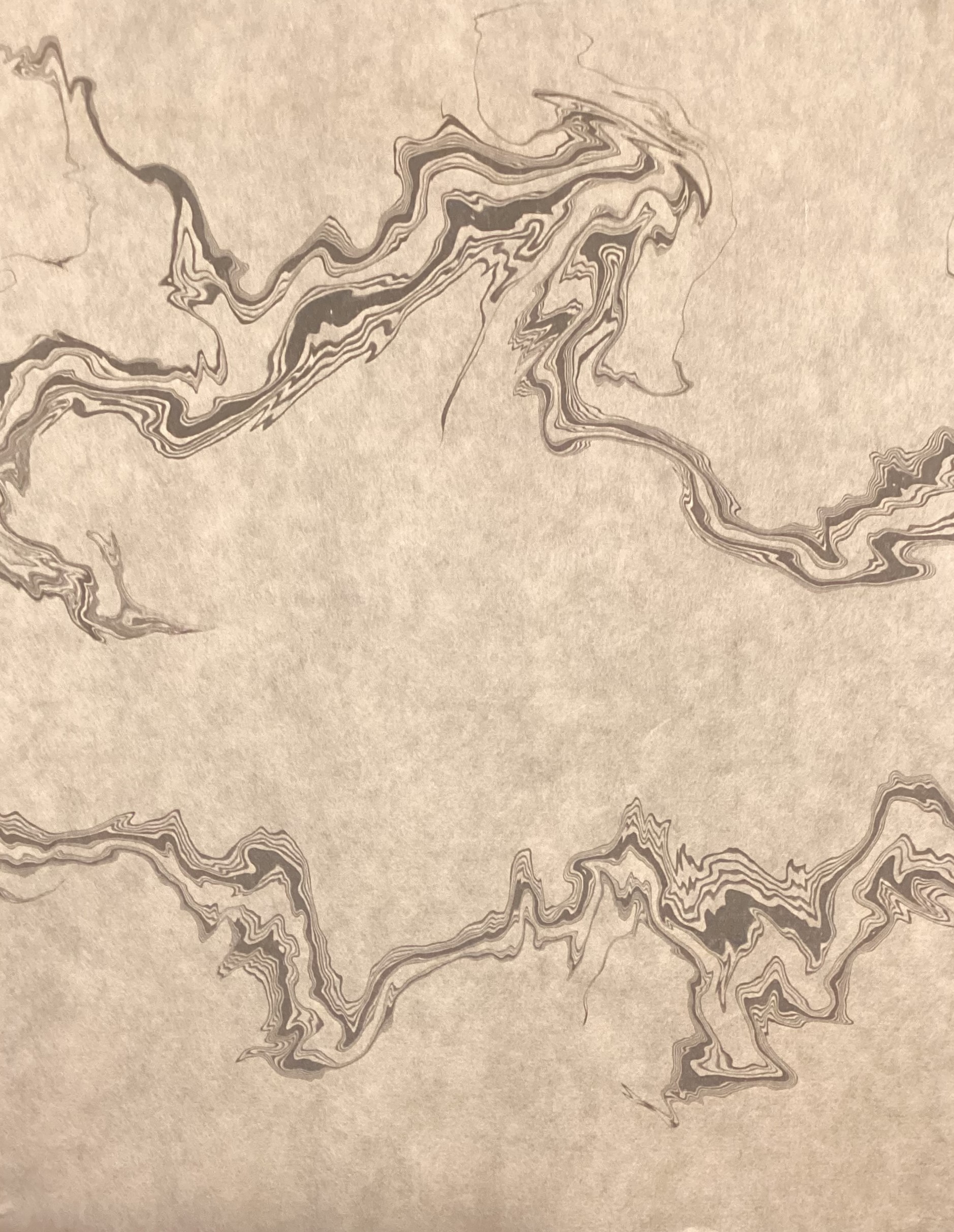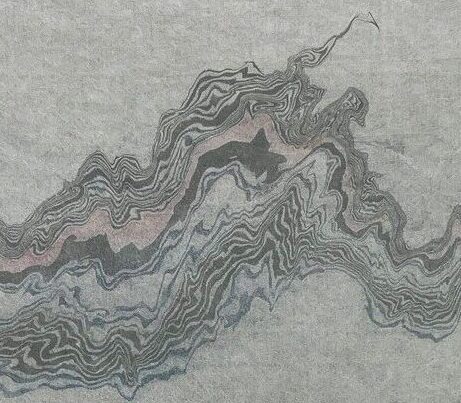
Tanzaku are long, narrow strips of paper used for small drawings and paintings, and for recording poetry. Slips of paper had been in use, in Japan, for a variety of tasks for centuries. However, beginning in the Muromachi period (1336-1392), they became more decorative vehicles for the composition and exchange of poetry (Rabinovitch and Bradstock p8.). By the Edo period, this had expanded further and tanzaku can be seen using a wide variety of decorative paper techniques, including suminagashi.
The International Research Center for Japanese Studies, in Kyoto, maintains an extensive collection of over 900 late Edo period tanzaku from the Kyoto region that show the variety of papers and decorative techniques in use at the time. Most interestingly, the collection – Tanzaku, or Poems by Noteworthy Kyoto Personages – contains sixteen that have suminagashi backgrounds. These tanzaku, dating from the early to mid-nineteenth century, show a wide variety of patterns, some showing the addition of blue and red/pink along with sumi, some also with gold or silver flake decoration. The intensity of ink/color is still on the lighter side so as not to interfere with the poetry, but many have the overall pattern that is characteristic of the suminagashi of modern times. I am grateful to the Center for allowing me to show them here, and special thanks to Jake Benson who discovered and posted about this in 2007 (DARUMA MUSEUM (02) … DARUMA ARCHIVES: Tanzaku).
















